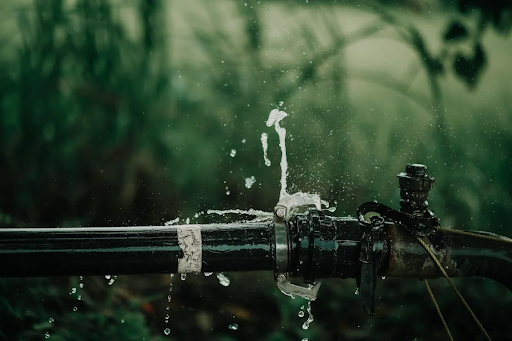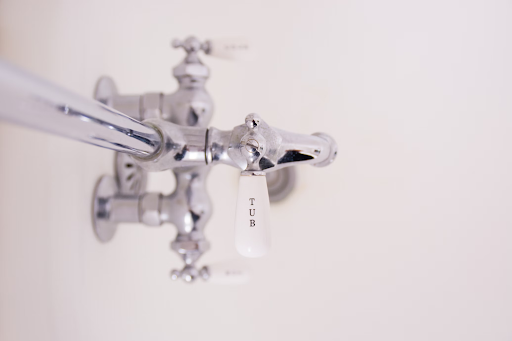A leaking ceiling is a problem you can’t ignore. Not only can it cause damage to your property, but it also poses risks to your health and safety. Understanding the causes and solutions is key to preventing more serious damage. Here’s a breakdown of common reasons your ceiling might be leaking and how you can fix it.

Blocked Gutters
Clogged gutters can cause water to overflow and run down the sides of your house, eventually seeping into your ceiling. Debris like leaves, twigs, and dirt can obstruct the flow of water, making it back up under your roof. Cleaning your gutters regularly and installing gutter guards can help you prevent this issue. When it comes to blocked gutters, read more here to learn how clearing them can prevent costly water damage and roof leaks. If your ceiling is already leaking, check the gutters and downspouts to clear the blockages.
Damaged Roof Shingles
One of the most common reasons for water leaking from your ceiling is damaged or missing roof shingles. When shingles crack or fall off due to aging or severe weather, rainwater can seep into your home. To fix this, inspect your roof for missing shingles and replace them immediately. If the damage is extensive, consider hiring a professional roofer to prevent further leaks.
Exposure to Weather Elements: Roof shingles are constantly exposed to harsh weather conditions like rain, wind, and sun. Over time, this exposure can cause shingles to crack, curl, or even blow off entirely, leaving your roof vulnerable to leaks. Regularly inspecting your roof after severe weather events can help you catch and replace damaged shingles before they cause water to seep into your ceiling.
Poor Installation: If your roof shingles were improperly installed, they may not be providing the necessary protection. Poor installation can lead to gaps where water can enter, especially at the seams or edges of your roof. To fix this, you may need to hire a professional to re-install or repair sections of your roof to ensure they’re securely in place.
Aging Shingles: As shingles age, they lose their ability to repel water effectively. Older shingles may become brittle, crack easily, or develop gaps between them, all of which can result in leaks. If your roof is more than 15-20 years old, it might be time to consider a full replacement to prevent ongoing water damage from worn-out shingles.
Moss and Algae Growth: Moss and algae can grow on your roof in damp environments, trapping moisture against the shingles and causing them to deteriorate faster. This trapped moisture can weaken the shingles, making it easier for water to seep through and cause leaks. Regularly cleaning your roof and using treatments to prevent moss and algae growth can help you avoid this issue.
Damaged Flashing
Flashing, the metal material that seals joints on your roof, plays a crucial role in preventing water leaks. Over time, flashing can corrode, become loose, or crack, allowing water to enter your home. If you notice water stains on your ceiling near chimneys, skylights, or vents, it could be due to faulty flashing. Replace or repair the damaged flashing to stop the leak.
Leaking Pipes
Pipes that run through your ceiling can develop leaks due to corrosion, cracks, or burst seals. These leaks can be especially hard to detect since they’re often hidden behind walls. If you notice water dripping from your ceiling during periods of dry weather, you might be dealing with a plumbing issue. In this case, contact a plumber to inspect the pipes and replace any damaged sections.
Condensation Buildup
In homes with poor insulation or ventilation, condensation can form in attics and ceilings. This is especially common in areas with high humidity. Over time, the moisture buildup can weaken your ceiling materials, causing leaks. Installing proper insulation and ventilation in your attic can help reduce condensation and prevent future leaks.
Poor Ventilation: Without adequate airflow, warm, humid air can get trapped in your attic, leading to condensation on cooler surfaces. This moisture then collects on your ceiling, eventually seeping through and causing damage. To fix this, ensure your attic is properly ventilated by installing vents that allow air to circulate and carry excess moisture away.
Inadequate Insulation: Insufficient insulation can cause temperature differences between your attic and living spaces, encouraging condensation to form. When cold air in your attic meets warm air from inside your home, it creates moisture. Adding proper insulation in your attic will help maintain consistent temperatures and reduce the risk of condensation.
High Indoor Humidity: High humidity levels inside your home can also contribute to condensation. Daily activities like cooking, showering, and using appliances can raise indoor humidity levels. To combat this, use dehumidifiers, and exhaust fans, and keep windows open when possible to promote airflow and reduce moisture levels.
Unsealed Ducts: Leaky air ducts in your attic can release warm air, causing condensation to form on cooler surfaces like the roof or ceiling. If your ducts aren’t properly sealed, they can contribute to moisture buildup, eventually leading to ceiling leaks.
HVAC System Leaks
Air conditioners and heating systems can leak water if they’re not properly maintained. A clogged condensate drain line or a malfunctioning air handler can cause water to pool and drip through your ceiling. Regularly servicing your HVAC system and cleaning the drain lines can help you avoid leaks caused by these appliances.
Cracked Ceiling or Roof
Over time, structural shifts in your home or heavy impacts from falling branches can cause cracks in your roof or ceiling. These cracks allow water to seep through and cause leaks. If you find visible cracks in the roof or ceiling, patch them up with appropriate sealants or hire a professional to assess the damage.
Old or Worn-out Roofing Material
If your roof is over 20 years old, the materials might simply be deteriorating due to age. Roofing materials like asphalt, wood, or tile can break down over time, making them less effective at keeping water out. If your roof is nearing the end of its life, it may be time to replace it entirely. This is a bigger investment, but it will save you from constant repairs and ongoing water damage.

A leaking ceiling can be a sign of a bigger problem. Whether it's due to a damaged roof, blocked gutters, or leaking pipes, identifying the root cause is crucial to fixing the issue. By addressing these problems early and taking preventive steps, you can protect your home from costly water damage.
Related Article:



(0) comments
We welcome your comments
Log In
Post a comment as Guest
Keep it Clean. Please avoid obscene, vulgar, lewd, racist or sexually-oriented language.
PLEASE TURN OFF YOUR CAPS LOCK.
Don't Threaten. Threats of harming another person will not be tolerated.
Be Truthful. Don't knowingly lie about anyone or anything.
Be Nice. No racism, sexism or any sort of -ism that is degrading to another person.
Be Proactive. Use the 'Report' link on each comment to let us know of abusive posts.
Share with Us. We'd love to hear eyewitness accounts, the history behind an article.